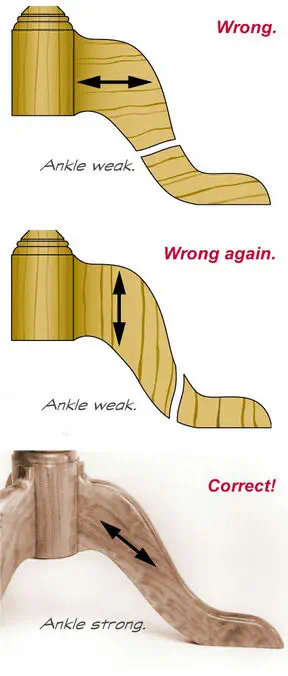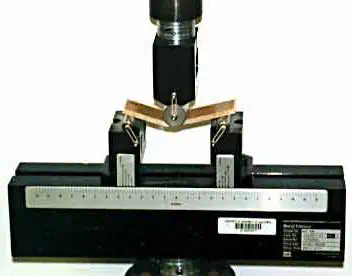GRAIN DIRECTION AND STRENGTH
To take full advantage of a wood’s strength, pay
attention
to the grain direction. Wood is a natural polymer —
parallel
strands of cellulose fibers held together by a lignin
binder. These long chains of fibers make the wood
exceptionally strong — they resist stress and spread
the
load over the length of the board. Furthermore,
cellulose is
tougher than lignin. It’s easier to split a board with
the
grain (separating the lignin) than it is to break it
across
the grain (separating the cellulose fibers).
Remember this when you lay out the parts of a project.
Always orient the grain so the fibers support the
load.
Whenever possible, cut the parts so the grain is
continuous,
running the length of the board. This also applies to
wood
joinery! When cutting a tenon, for example, the wood
grain
must run the length of the tenon and
the
board so the grain is continuous.

The wood grain in the legs of this pedestal table runs
parallel to the longest dimension to make the legs as
strong
as possible. Were the grain to run parallel or
perpendicular
to the pedestal, the legs would be weak at the ankles.





